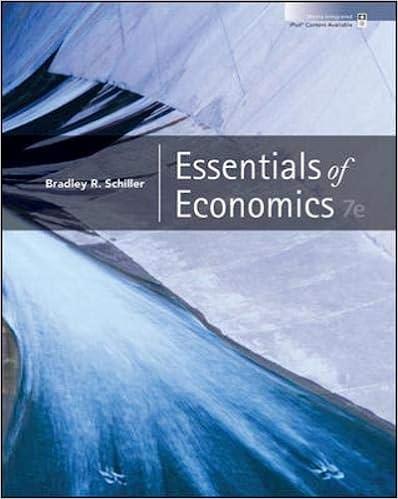2.2. In the short run, the farmer's costs in the production of Humming Honey consist of fixed costs and variable costs. Using your knowledge of cost formulas and calculations, redraw and complete the table below.
2.3. Kobus can increase the total revenue of Humming Honey by increasing the price. Is the demand for honey elastic or inelastic? Justify your answer.
2.4. Using the calculated cost of honey production in Question 2.2 and the calculated revenue for honey based on combinations B, C, D and E in Question 1.4, determine which combination will maximise the profit of honey.
2.5. The cross-price elasticity for tea has a value of -1.23. Explain the following to Kobus: 2.5.1. The type of product that tea is in relation to honey
2.5.2. What will happen to the demand for honey if the price of tea increases.
Scenario 1 A farmer in the Free State, Kobus, specialises in the production of two products, namely apples and haney. Kabus is one of the major suppliers of green apples to the local Checkers stores in Bloemfontein. The production of green apples, according to Kobus, is labour intensive as all at R50 per crate. apples are hand-picked on his farm. Kobus sells his green apples to the local Checkers Kobus supplies his signature honey called Humming Honey to a niche market in the Western Cape. The production of honey is highly capital intensive. Kobus tests, bottles and labels his signature honey on his fam. The final product is sold at R560 a box. The production possibilities curve (PPC) below shows the combinations of green apples and honey attainable when the resources of the farmer are fully and efficiently employed. The different combinations of green apples and honey are represented by points A, B. C. D. E and F on the production possibilities curve. Green Apples (per crate) 6 9 12 15 Honey (per box) The inputs employed by Kobus in the short run include labour and capital. The production unction for Kobus is expressed below: TP -NKL) where TP = Total production K - Capital L - Labour In addition, Kobus provides you with the following formulas: Revenue - P x Q Profit = TC - Revenue SBS Page S of Assignme SUMMATIVE ASSESSMENT (ASSIGNMENT) - 2020 FIRST SEMESTER ECONOMICS IA (MICA ECOISA Question 1 [20] In scenario 1, the production possibilities curve shows the maximum combinations of green apples and honey that can be produced by Kobus if all the factors of production are employe fully and efficiently. 1,1. Given your understanding of the production possibilities curve, complete the specified production possibilities for Kobus in the table below. Possibility A Green apples 100 Honey 1.2. If Kobus is currently producing at point C, explain the concept known as opportunity cost if Kobus decides to move production from point C towards point E. 1.3. Using a production pos for Kobus: and explain the following circumstances 1.3.1. A shift in production from honey towards apples 1.3.2. An increase in the minimum wage rate (2) 1.3.3. Advancement in the capital used for honey production 1.4. Revenue is the total value of sales. For combinations B. C. D and E, determine which combination of green apples and honey will yield the highest revenue. Show calculations to substantiate your answer. Question 2 [18] In scenario 1, Kobus specialises in the production of two products, namely apples and honey. With reference to Humming Honey, answer the following questions With reference to the (per box) production of Humming Honey. marginal cost, marginal revenue and marginal production 2.2. In the short run, the farmer's costs in the production of Humming Honey consist of fixed costs and variable costs. Using your knowledge of cost formulas and calculations. redraw and complete the table below. (4) Quantity Fixed Total ariable (0) Cost Cost Cost Fixed (TFC) (TVC) (TC) Cost (AFC) Cost (AVC) (ATC) (MC) 3 770 3 770 3 770 3 920 3 770 4 010 4 060 3 770 4 110 1 027 5 3 770 410 4 180 3 770 570 4 340 723.33 3 770 4 290 538.57 74.29 612.86 3 770 600 4 370 471.25 546. 25 SBS Page 6 of Assignme SUMMATIVE ASSESSMENT (ASSIGNMENT) - 2020 FIRST SEMESTER ECONOMICS IA (MICROECONOMICS Quantity Fixed Total Avera (@) Cost Cost (TFC) (TVC) (TC) Cost (AFC) ATC) (ATC) 3 770 740 4510 418.89 501.11 3 770 4 630 11 3 770 910 4 680 342.73 82.73 425.45 3 770 4 770 83.33 397.6 3 770 4 970 92.31 3 770 1 450 5 220 269.29 103.57 372.56 3 770 1 850 5 620 251.30 123.33 374.67 2.3. Kobus can increase the total revenue of Humming Honey by increasing the price. Is the demand for honey elastic or inelastic? Justily your answer. 2.4, Using the calculated cost of honey production in Question 2.2 and the calculate revenue for honey based on combinations B, C, D and E in Question 1.4, determin which combination will maximise the profit of (5) 2.5. The cross-price el isticity for tea has a value of -1.23. Explain the following to Kobus: 2.5.1. The type of product that ation to honey 2.5.2. What will happen to the demand for honey if the price of tea increases (2) (2)







